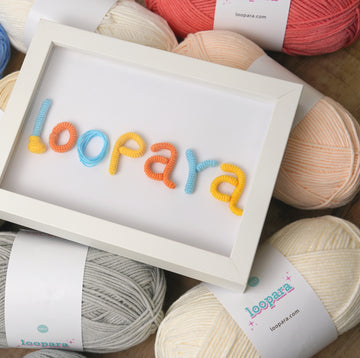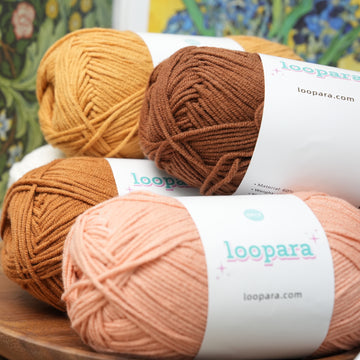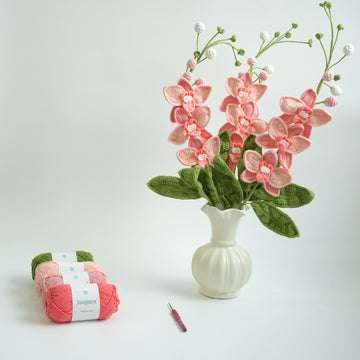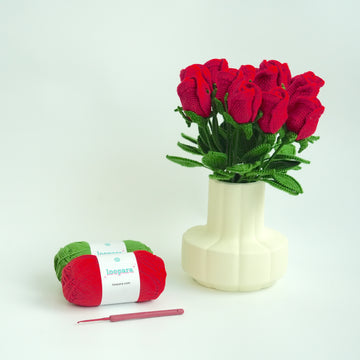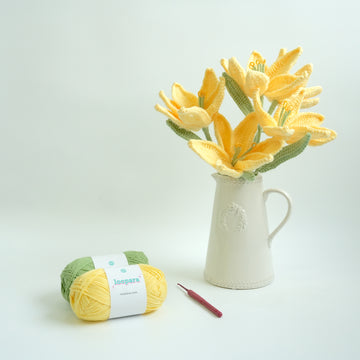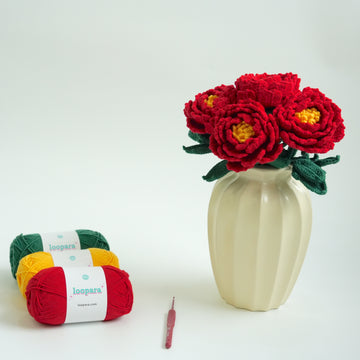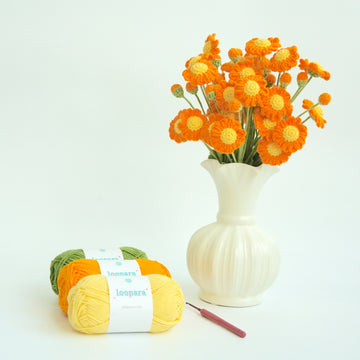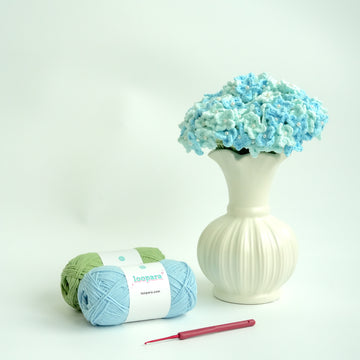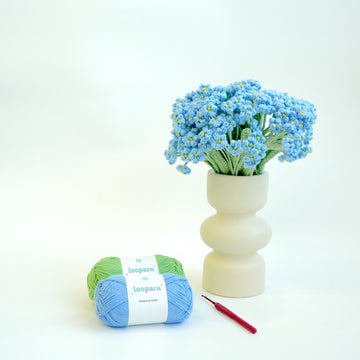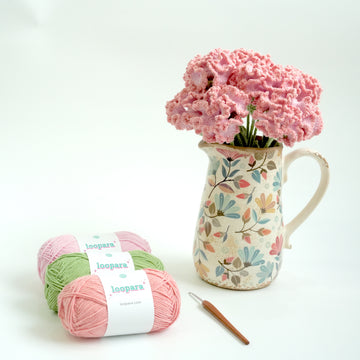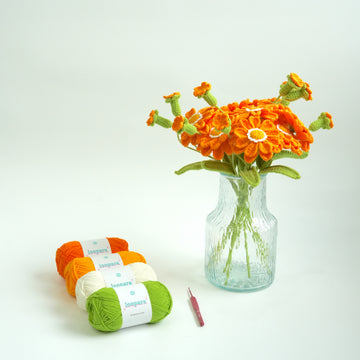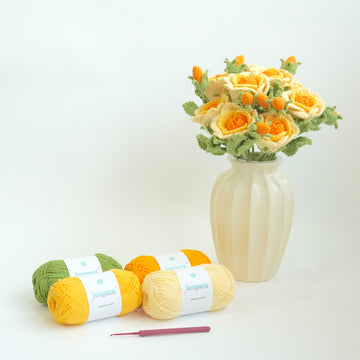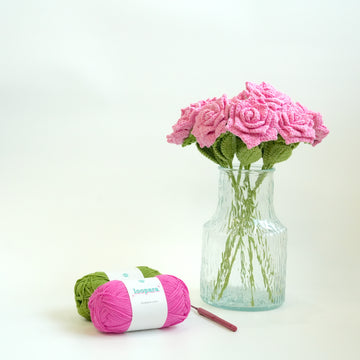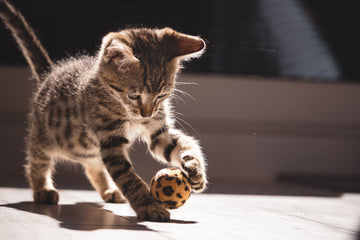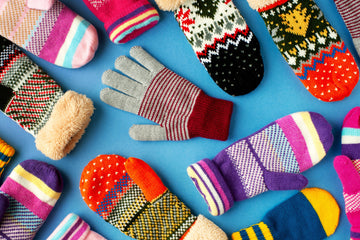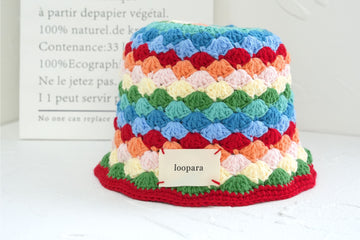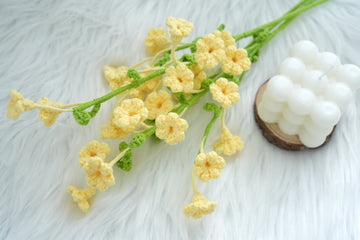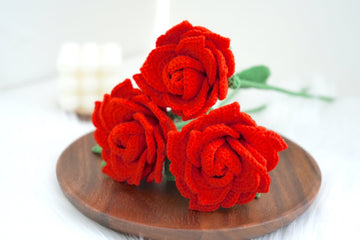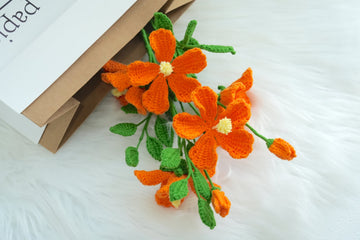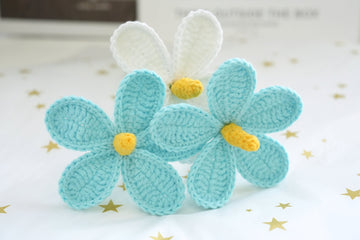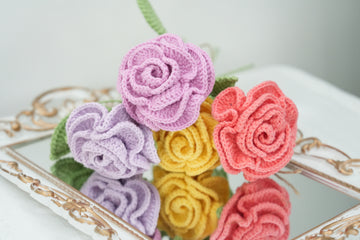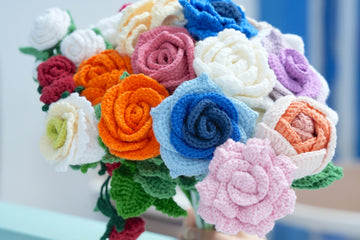The right yarn is crucial to the success of your crochet project. But with so many types of yarn for crochet on the market, how do you choose?
We’re going to give you an overview of the different kinds of crochet yarn. And we’ll discuss the factors to consider when selecting the right yarn for your project.
Key characteristics of crochet yarn
Crochet yarns have a number of different properties. They vary according to their:
- Weight. The weight of a crochet yarn basically means how thick it is. The heavier the yarn, the thicker it is. And this affects how robust the finished item is, and how it drapes.
- Fiber. Crochet yarns can be made from a whole host of fibers, both natural and man-made, traditional and innovative. The choice of fiber will influence the weight, finish, drape and luster of the crocheted article.
- Twist. The twist is the direction in which the threads of a yarn have been twisted together. There are two types – “S”, the most common, and “Z”. For most projects, the twist isn’t that important. But it can have implications for the strength and definition of the finished article, depending on whether the person crocheting is left- or right-handed.
- Ply. The ply, also known as the cord, of a yarn refers to the number of threads which form it. Yarns can be single ply, 2-ply, or multiple-ply. The ply count can affect the strength and roundness of the yarn, and the definition of individual stitches.
- Spin. Fibers may be carded or combed before they’re spun into yarn. The approach can affect the finish, drape, durability, water resistance, and insulating properties of the yarn.
- Color. Color has a huge impact on the visual appeal of crocheted items. You can choose to buy your yarn pre-dyed or, if you’re looking for a bespoke shade, dye it yourself.
Let’s look at all these aspects in more detail.

1. Yarn weight
The weight of a yarn refers to its thickness, with “heavier” yarns being thicker. Yarn weight is defined in a number of different ways, but it’s usually assessed according to something called “wraps per inch” (WPI).
This simply means the number of times the yarn can be wrapped around a rule in the space of one inch. The thicker the yarn, the lower the WPI.
If you’ve got a new skein (the proper word for a bundle of yarn), it will usually state the weight on the label. And in general, the higher the number, the heavier (i.e. thicker) the yarn.
Different manufacturers may use different terms to refer to yarn weights. To try to introduce some consistency, the Craft Yarn Council has created a standard numbering system. This classifies yarns from 0 to 7, with 0 being the lightest and 7 the heaviest.
If you have a skein of yarn that’s lost its label, you can count the WPI to identify its weight. Just wrap your yarn around a pencil, keeping it snug and ensuring the wraps don’t overlap. Then count the number of wraps that fit into an inch and see where it fits in the table below.
|
Weight |
Wraps per inch (WPI) |
Yarn type |
|
0 |
30-40 |
Lace |
|
1 |
14-30 |
Super-fine (also known as fingering, sock or 4-ply) |
|
2 |
12-18 |
Fine (also known as sport or baby) |
|
3 |
11-15 |
Light (also known as double-knit or DK) |
|
4 |
9-12 |
Medium (also known as worsted or Aran) |
|
5 |
6-9 |
Bulky (also known as chunky, craft or rug) |
|
6 |
5-6 |
Super-bulky (also known as super-chunky or roving) |
|
7 |
1-4 |
Jumbo (also known as ultra or roving) |
As you can see, some of these categories overlap. A yarn of 11 WPI, for example, might be classified as medium, light or fine. And although sock and 4-ply appear in the same range, they’re not exactly the same.
If a pattern calls for a particular yarn weight, your best bet is to match the term to what’s on the label.
Different sizes of crochet hook are generally recommended for use with different weights of yarn. The thicker the yarn, the larger the hook.
For a lace yarn, for example, the recommended hook size is between 1.5 and 2.5 millimeters. At the other end of the spectrum, a hook of at least 15 millimeters is recommended for use with jumbo yarn.
Choosing the right yarn weight
There are no hard and fast rules about what weight yarn to use. But as a starting point, different weights tend to work better for different kinds of projects. The table below sets out some typical uses for the different weights.
|
Yarn weight |
Typical uses |
|
0 – lace |
Shawls, lightweight garments and accessories |
|
1 – super-fine |
Socks, lightweight sweaters |
|
2 – fine |
Baby blankets, baby garments, toys, jewellery |
|
3 – light |
Lightweight garments, more robust baby items |
|
4 – medium |
Medium-weight sweaters, accessories, coasters |
|
5 – bulky |
Rugs, baskets, blankets, sweaters |
|
6 – super-bulky |
Blankets, home décor |
|
7 – jumbo |
Wall art, thick blankets, felting projects |
2. Yarn fibers
Yarns may be made from natural or synthetic fibers, or a mixture of the two.
Natural fibers include wool, silk, cotton, linen and bamboo. Synthetic fibers include acrylic, polyester and nylon. And blended fibers are designed to get the best properties of their constituent parts.
Innovative new options are being created all the time. You can now buy sustainable yarns produced from recycled fabric. And there are even experimental yarns made from natural substances like milk and kemp.
The table below summarizes the properties of some of the most commonly used crochet yarn fibers.
|
Fiber |
Pros |
Cons |
|
Wool |
|
|
|
Bamboo |
|
|
|
|
|
|
Acrylic |
|
|

3. Yarn twist
The twist of a yarn is the way the individual threads have been twisted together to form it. You can see this by looking closely at a length of yarn.
If the twist runs from the top left to the bottom right – like the middle line of an “S” – it’s an S-twist. Most commercial yarns are twisted this way.
It the twist runs from the top right to the bottom left – like the middle line of a “Z” – it’s a Z-twist.
If you crochet right-handed, your crocheting action will work with the direction of a Z-twist yarn. But with an S-twist, it will work against it, gradually loosening the twist.
The opposite is true for left-handed crocheters. Their crochet action will tighten an S-twist and loosen a Z-twist yarn.
For most projects, the difference will be too slight to notice. But if you’re doing very delicate work – making crochet jewelery, for example – choosing a twist that works with your crochet style will allow you to get better detail.
4. Ply
The ply of a yarn generally refers to the number of individual threads that form it.
The exception to this can be the term “4-ply”. This sometimes means a yarn formed from 4 threads. But it was also traditionally used to describe a particular yarn weight, roughly equivalent to super-fine.
If a yarn isn’t twisted at all, it’s “single ply”. Otherwise, the number of threads you can count is the ply – 2-ply for two threads, 3-ply for three, and so on.
The higher the ply, the stronger a yarn will usually be. Single ply, for example, can snap easily, so isn’t a good choice for items that will have rougher use. 2-ply is often used in lace. And 3-ply and above is generally used for harder-wearing items like sweaters or socks.
Higher ply yarns will also generally show good stitch definition. That makes them a good option for detailed work like jewellery and home décor.
And the more plies to a yarn, the rounder it will be. Lower ply yarns can flatten out if used with particular patterns, such as cabling or ribbing.
5. Spin
Different yarns are prepared differently before spinning. There are two main types: woolen spun and worsted. (Don’t confuse “worsted” in this context with worsted weight yarn.)
Woolen spun yarns are “carded” before they’re spun. This is a bit like backcombing. It introduces air into the yarn and means that it retains heat better. Woolen spun yarns are also more elastic and lighter weight.
Worsted yarns, on the other hand, are combed before spinning. This makes the fibers smoother and means this type of yarn is stronger and has better drape, stitch definition, and water resistance.
6. Color
The final factor to consider in your choice of yarn is its color.
There are a huge range of pre-dyed yarns out there to suit all tastes. Acrylic yarns in particular are available in vibrant shades that wear well.
But if you want something truly unique, you could also consider dyeing your own yarn. If you want to take this route, choose a yarn that will soak up and hold the color effectively.
Cotton yarns work well for this. And mercerized cotton is particularly good when it comes to color fastness.
Types of yarn for crochet: the final word
The sheer range of crochet yarns on the market can be overwhelming. But by thinking through the properties you want – strength, color fastness, drape, warmth, sustainability – you’ll soon narrow things down.
The right yarn will depend on its weight, fibers, color and ply. And for more delicate projects, twist and spin types can be important too.
